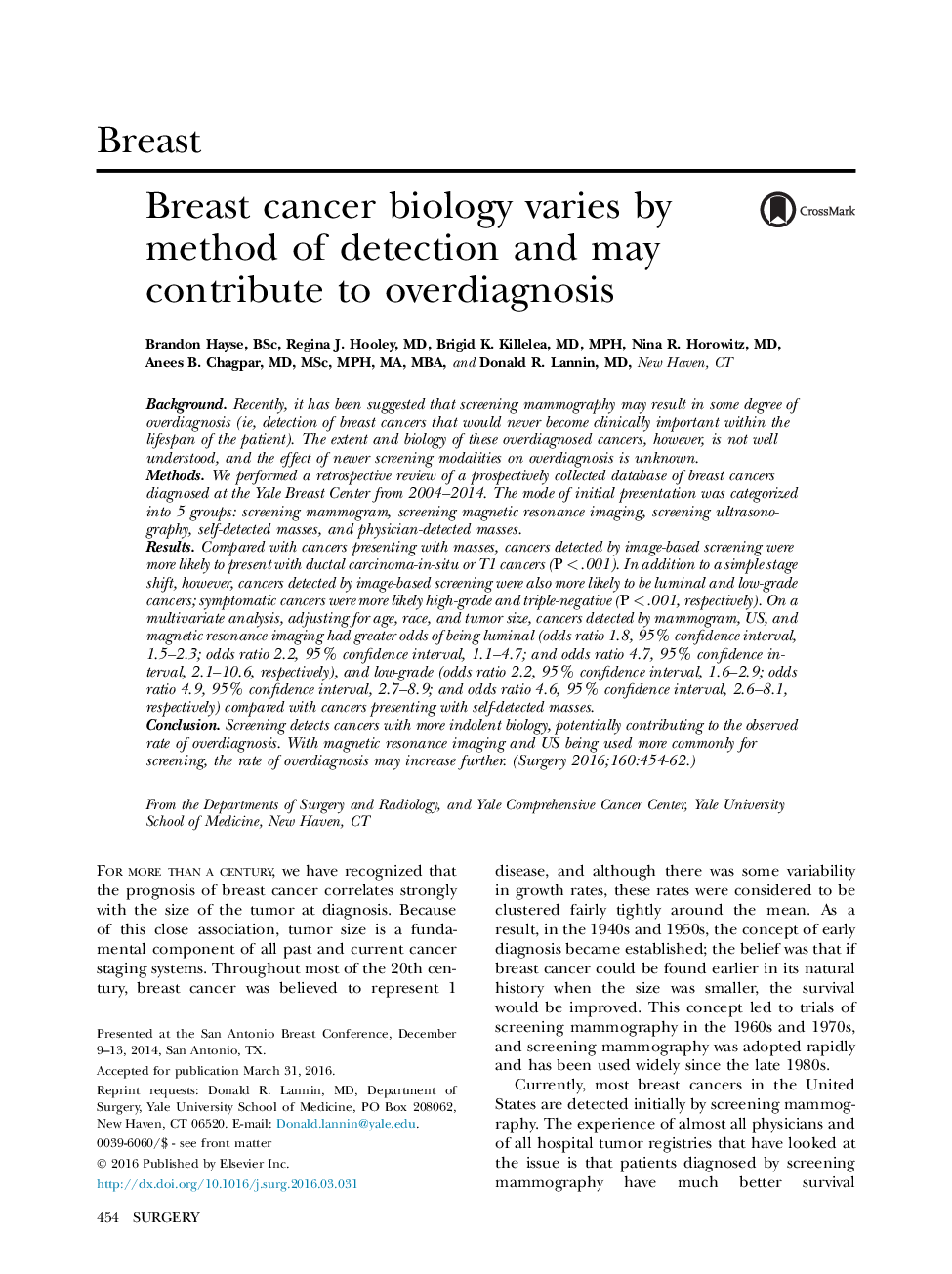| Article ID | Journal | Published Year | Pages | File Type |
|---|---|---|---|---|
| 6255000 | Surgery | 2016 | 9 Pages |
BackgroundRecently, it has been suggested that screening mammography may result in some degree of overdiagnosis (ie, detection of breast cancers that would never become clinically important within the lifespan of the patient). The extent and biology of these overdiagnosed cancers, however, is not well understood, and the effect of newer screening modalities on overdiagnosis is unknown.MethodsWe performed a retrospective review of a prospectively collected database of breast cancers diagnosed at the Yale Breast Center from 2004-2014. The mode of initial presentation was categorized into 5 groups: screening mammogram, screening magnetic resonance imaging, screening ultrasonography, self-detected masses, and physician-detected masses.ResultsCompared with cancers presenting with masses, cancers detected by image-based screening were more likely to present with ductal carcinoma-in-situ or T1 cancers (P < .001). In addition to a simple stage shift, however, cancers detected by image-based screening were also more likely to be luminal and low-grade cancers; symptomatic cancers were more likely high-grade and triple-negative (P < .001, respectively). On a multivariate analysis, adjusting for age, race, and tumor size, cancers detected by mammogram, US, and magnetic resonance imaging had greater odds of being luminal (odds ratio 1.8, 95% confidence interval, 1.5-2.3; odds ratio 2.2, 95% confidence interval, 1.1-4.7; and odds ratio 4.7, 95% confidence interval, 2.1-10.6, respectively), and low-grade (odds ratio 2.2, 95% confidence interval, 1.6-2.9; odds ratio 4.9, 95% confidence interval, 2.7-8.9; and odds ratio 4.6, 95% confidence interval, 2.6-8.1, respectively) compared with cancers presenting with self-detected masses.ConclusionScreening detects cancers with more indolent biology, potentially contributing to the observed rate of overdiagnosis. With magnetic resonance imaging and US being used more commonly for screening, the rate of overdiagnosis may increase further.
